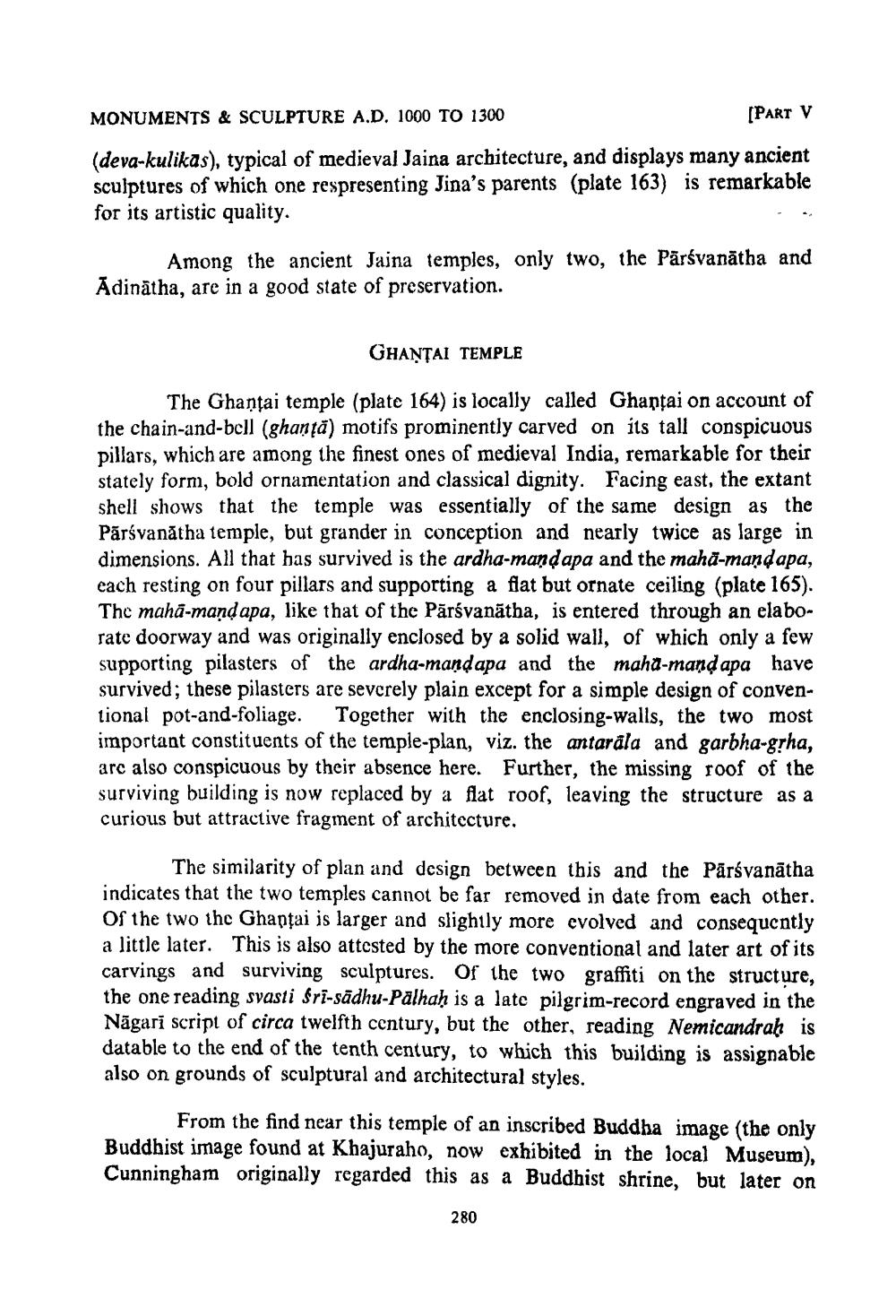________________
MONUMENTS & SCULPTURE A.D. 1000 TO 1300
[PART V
(deva-kulikas), typical of medieval Jaina architecture, and displays many ancient sculptures of which one respresenting Jina's parents (plate 163) is remarkable for its artistic quality.
Among the ancient Jaina temples, only two, the Pārsvanātha and Adinatha, are in a good state of preservation.
GHANTAI TEMPLE
The Ghanțai temple (plate 164) is locally called Ghantai on account of the chain-and-bell (ghanță) motifs prominently carved on its tall conspicuous pillars, which are among the finest ones of medieval India, remarkable for their stately form, bold ornamentation and classical dignity. Facing east, the extant shell shows that the temple was essentially of the same design as the Pārsvanātha temple, but grander in conception and nearly twice as large in dimensions. All that has survived is the ardha-mandapa and the mahā-mandapa, each resting on four pillars and supporting a flat but ornate ceiling (plate 165). The mahā-mand apa, like that of the Pārsvanātha, is entered through an elaborate doorway and was originally enclosed by a solid wall, of which only a few supporting pilasters of the ardha-mandapa and the maha-mand apa have survived; these pilasters are severely plain except for a simple design of conventional pot-and-foliage. Together with the enclosing-walls, the two most important constituents of the temple-plan, viz. the antarala and garbha-grha, are also conspicuous by their absence here. Further, the missing roof of the surviving building is now replaced by a flat roof, leaving the structure as a curious but attractive fragment of architecture.
The similarity of plan and design between this and the Pārsvanātha indicates that the two temples cannot be far removed in date from each other. Of the two the Ghapțai is larger and slightly more evolved and consequently a little later. This is also attested by the more conventional and later art of its carvings and surviving sculptures. Of the two graffiti on the structure, the one reading svasti Sri-sādhu-Palhaḥ is a late pilgrim-record engraved in the Nāgari script of circa twelfth century, but the other, reading Nemicandrah is datable to the end of the tenth century, to which this building is assignable also on grounds of sculptural and architectural styles.
From the find near this temple of an inscribed Buddha image (the only Buddhist image found at Khajuraho, now exhibited in the local Museum), Cunningham originally regarded this as a Buddhist shrine, but later on
280




